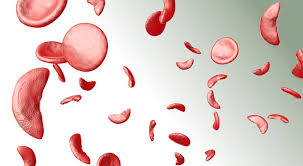Supported by an educational grant from Novartis Pharmaceuticals Corporation.
Credit Available
Physicians — maximum of 1.0 AMA PRA Category 1 Credit(s)™
All other health care professionals completing this course will be issued a statement of participation.
Target Audience
This online educational activity is directed toward emergency medicine physicians, hospitalists, hematologists, nurse practitioners, physician assistants, nurses, and other health care professionals who would be involved in the diagnosis and management of SCD.
Program Overview
Sickle cell disease (SCD) is a continually increasing health problem, with approximately 300,000 individuals born annually worldwide with this genetic disease. A defect in the HBB gene on chromosome 11 results in the production of a form of hemoglobin that is less soluble than normal fetal or adult hemoglobin. Lifelong complications resulting from this mutation include anemia, infections, stroke, tissue damage, organ failure, intense painful episodes, and a shorter life expectancy. The intensive treatment needs and unpredictable, debilitating symptoms of people with SCD impose limitations on education, careers, and overall quality of life. Although hematopoietic stem cell transplantation can cure SCD, it is not feasible for most patients. However, new therapies in clinical trials offer targeted, pathophysiologic approaches to improve the quality and duration of life for people with SCD.
Advances in™ Sickle Cell Disease: Assessing the Impact of Emerging Agents will help clinicians apply a guideline-based approach for management of acute and chronic pain as well as the complications of SCD through a series of video interviews with 2 experts in SCD. The essentials of preventive care, multidisciplinary communication of treatment plans, importance of patient education, and efficacy and safety of emerging agents for treatment of SCD will be discussed.
Benefits of Participating
Increase knowledge and competence regarding preventive health maintenance and pain treatment care plans for people with SCD
Learn strategies to effectively manage acute pain episodes in the emergency department
Build confidence in your knowledge of how to optimally treat various complications of SCD
Understand the pathophysiologic approaches of emerging and investigative agents
Learning Objectives
Upon completion of this activity, participants should be able to:
Summarize current guidelines for management of pain and complications due to SCD in affected patients.
Evaluate the efficacy and tolerability of agents for SCD being investigated in clinical trials.
Faculty
Jason W. Wilson, MD, MA, FACEP, FAAEM
Medical Director, Clinical Decision Unit
Associate Medical Director, Adult Education
Research Director, Emergency Medicine
Associate Professor, Division of Emergency Medicine
Department of Internal Medicine
Morsani College of Medicine at the University of South Florida
Tampa General Hospital
Tampa, FL
Matthew M. Heeney, MD
Associate Chief, Hematology
Director, Sickle Cell Program
Boston Children’s Hospital
Assistant Professor, Pediatrics
Harvard Medical School
Boston, MA
Physician Accreditation Statement
Instructions for This Activity and Receiving Credit
You will need to log in to participate in the activity.
Each presentation may contain an interactive question(s). You may move forward through the presentation; however, you may not go back to change answers or review audio files/content until you finish the presentation.
At the end of the activity, educational content/audio files will be available for your reference.
In order to receive a CME/CE certificate, you must complete the activity.
Complete the Posttest and pass with a score of 70% or higher, complete the Evaluation, and then click on “Request for Credit.” You may immediately download a CME/CE certificate upon completion of these steps.
Off-Label Disclosure and Disclaimer
This CME activity may or may not discuss investigational, unapproved, or off-label use of drugs. Participants are advised to consult prescribing information for any products discussed. The information provided in this CME activity is for continuing medical and nursing education purposes only and is not meant to substitute for the independent clinical judgment of a physician and nurse relative to diagnostic or treatment options for a specific patient’s medical condition.
The opinions expressed in the content are solely those of the individual faculty members, and do not reflect those of PER® or the company that provided commercial support for this program.


